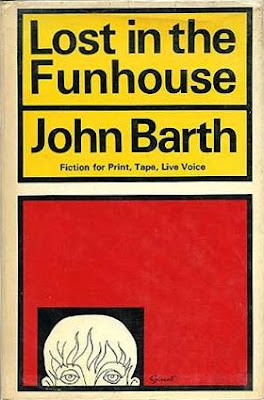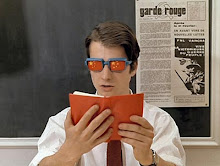THE MISSOURI BREAKS (1976, Arthur Penn)- I wasn’t quite prepared for the gradually increasing oddity of this movie, a quality that is directly related to an unhinged performance from Marlon Brando as an eccentric “regulator” hired by a rancher to kill a bunch of Jack Nicholson-led horse rustlers. I’ve known of this film’s notorious status for years, and yet it still threw me for a loop. The prevailing theory is that somewhere along the way Penn lost control of the film, largely due to Brando’s mammoth ego and erratic behavior. And this very well might be true. What’s also true to my eyes is how Penn, along with his longtime editor Dede Allen, actually managed to salvage an at times powerful document from the footage. Things move from fairly typical revisionist Western territory into a surreal, fractured, dissonant environment and the steaming wreckage gets loosely assembled into commentary on the tenuous nature of control and the friction between one person’s perception and another’s identity. It’s an understatement that EVERYONE’S mileage is gonna vary on this one: I experienced at least a half dozen head smacking “what the fuck” moments as this baby unraveled (which in this case isn’t a bad thing), and there were surely elements that I didn’t enjoy, most notably John Williams’ score. However, taken as an unwieldy whole, BREAKS is one of the monumental last gasps from the New Hollywood before it basically got steamrolled by the worship of the bottom line at the dawn of ‘80s. Some directors were able to survive the transition, and a few were even able to flourish. While Penn continued to make films, he never seemed to really get his swagger back after BREAKS’ critical and commercial failure. That’s a drag, but he did make quite a few great ones along with this gobsmackingly weird one, one that just might be great as well. I need to see it again.
THE RULES OF THE GAME (1939, Jean Renoir)- One of the greatest of all films, most certainly. I’ve never met a Renoir movie that I didn’t love, and this just might be my favorite due to its rich complexity and perfect blend of satire and humanism. The use of deep focus is as integral here as in CITIZEN KANE, adding such brutal dimension to the characters and their actions that it’s unsurprising the initial reception to its brilliance was hostility. Much of the disdain is directly related to historical circumstances in Europe at the time of its release, WWII being just around the corner. It lambasts the behavioral mores of the idle rich without objectifying the working class and makes clear that social station and lifestyle are no security against the consequences of conduct. Well, his countrymen hated it, the invading Nazis banned it and for decades it was an essentially lost film, existing only in a truncated and far inferior edit. The miracle that is the currently available and justly celebrated fully-restored masterpiece stands as the foremost example of Renoir’s genius and his lasting importance. Nobody better exemplifies the concept of Classique = Moderne and his precise balance between content and form remains one of the beacons of 20th Century art.
HICKEY AND BOGGS (1972, Robert Culp)- I’m finding it really difficult to comprehend just why this film remains so unknown. Television star Culp’s sole motion picture as director, it combines a couple of very attractive elements, specifically a variation on the dark pessimism that infiltrated much of the serious cinema of its decade and a tough, raw, no-nonsense visual sensibility that is remindful of some of the older Hollywood hands that were still prolific or at least working in the same period, guys like Don Siegel and Phil Karlson. As such, it should please those enamored with the above mentioned New Hollywood in addition to folks who get randy at the sight of the lean ‘70s action cinema helmed by more underground names like John Flynn. There has been some talk about the film’s commercial failure, and I disagree with the notion that the movie was/is a downer. Culp (Boggs) and his co-star Bill Cosby (Hickey) are certainly bitter, despondent “loser” types, but they are not unsympathetic, registering more as two guys that have been bitten particularly hard on the ass by the cold, hard reality of life. And the story’s action arrives so briskly (and is so solidly directed) that it eases the presence of bleakness and turpitude, even Boggs’ flagrant alcoholism and his horrible choices regarding a nogoodnik ex-wife. My hypothesis is a simple one. People wanted a reprise of I SPY, and when they were offered this instead, they simply said no thanks. The overall heft of this very worthwhile one-shot is comparable to the grimy underbelly of post WWII American pulp crime fiction, Chester Himes in particular, and justice will go unserved until this film is available in a good transfer.
THE SOCIAL NETWORK (2010, David Fincher)- my pick as the best big-budget Hollywood film to hit screens so far this year, it’s an incredibly rich concoction of biopic, current events saga and legal film that utilizes a thrillingly tight flashback (or more appropriately, flash forward) structure (shades of Welles circa KANE) with wildly potent and smartly stylized dialogue (ala Sturges or Hawks, though obviously contemporary to the zeitgeist). Fincher has found a perfect balance between a bold approach to form and a compact, direct style of mainstream storytelling, and additionally his deft use of digital techniques and CGI gives me hope for the future of the medium as the use of 35MM film slowly becomes less commonplace. A huge part of his success, along with an unerring choice of collaborators, is the attention to detail and importance that’s given to scenes/moments that are essentially perfunctory to the overall weight of the narrative, or would seem so. Nothing is sloppy in the cinema of David Fincher. Small, throwaway moments are subtly imbued with meaning or at least with a modest, casual beauty that’s inextricably tied to the joy of watching: the clinical buzzing and brightness of a florescent light, or the noise level as people converse in a crowded bar, for two instances. And when a scene is overtly humorous, it’s a solid bet that it’s covertly much more than just that. Is this a great as ZODIAC? Well, no, since that was one of the ten best Hollywood films of the last decade. But NETWORK is scaled differently. Underneath the perceived insubstantial quality of its “tell-all” exterior is the guts of a film that speaks very deeply about how we live right now, but in a low key way that’ll work in the favor of longevity as the status of classic is eventually awarded.
































